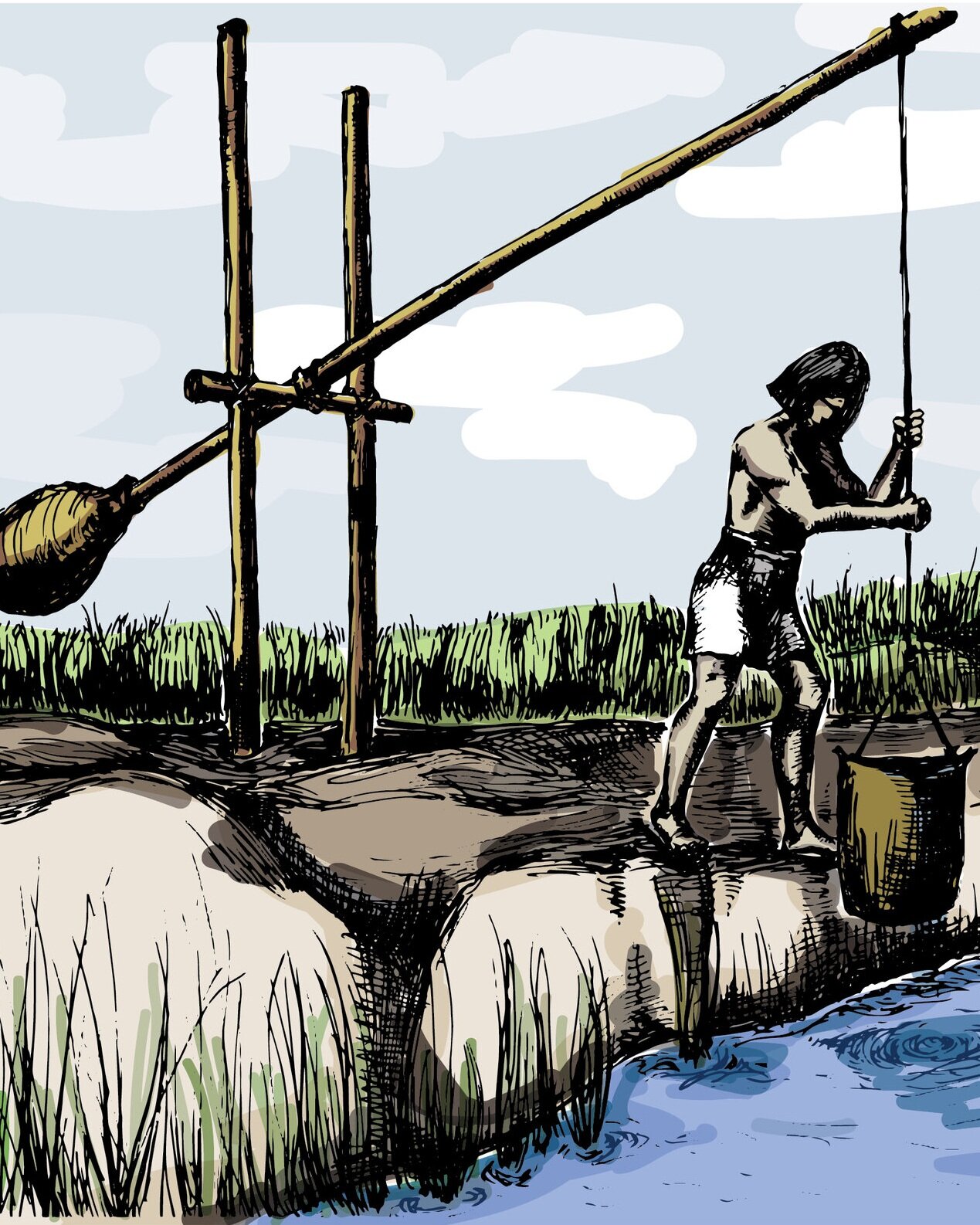
On February 11, 2019 in front of the Great Sphinx I said to Dr. Zahi Hawass pointing to the Great Pyramid, “I can build this pyramid in four years, Egyptian people used their heads, not muscles, to construct this Great Pyramid”.
— John Polywka
“To test my theory, I installed large swimming pool in my backyard and built a shaduf, utilizing a 5-gallon bucket (19 liters). With the technical assistance of architect Thomas Engstrand, I spent the summer of 2019 experimenting with stones weighing 50% of the average stone used to build the Great Pyramid (1,250 kg or 2,756 lbs).”
— John Polywka
“I’m not an archaeologist, and I’m not a scientist. Since my youth, I have been fascinated by ancient Egypt and obsessed with understanding how the Egyptian pyramids were built.”
— John Polywka
Project One:
Pharaoh’s Secrets of
the Pyramids
Without the Nile, there would be no Egypt, and without the water from the Nile, there would be no pyramids. Pharaoh's Secrets of the Pyramids outlines my theory that the Egyptian pyramids were built by harnessing the power of water rather than men's strength, ropes, and ramps.
Project Three:
Water Transportation at Giza
Water Transportation at Giza further describes how water was instrumental in constructing the Great Pyramid, proposing that the Egyptians utilized an infrastructure of waterways within the Khufu Basin to transport materials beyond inundation and throughout the year. Water Transportation at Giza ultimately describes how water and stones reached the pyramid base.
“The theory sounds quite convincing to me, not simply because it offers an alternative to manual/slave labour, but also because in a typically hydraulic context such as the Nile River and floodplain, water must have been key in the construction of some of the mega-architectural structures in the form of pyramids. In fact the route via water unlocks so many possibilities beyond conventional approaches to looking into and interpreting the past. Well, it’s time to shake the apple-tree…., dislodging Egyptologists out of their comfort zones!”
- Innocent Pikirayi, Professor in Archaeology
"I found your explanation and video very interesting, to the point that I have shown it to my students. Yours is certainly a logical theory, considering the importance of water in the Egyptian society and culture. Moreover, it may be complementary to other ones. "
- Prof Dr. Paola Buzi - Egyptology and Coptic Studies - Sapienza University of Rome
Water & Sand: Construction of the Great Pyramid
This video combines all aspects of my theory using illustrations, animation, and detailed descriptions to demonstrate precisely how the Egyptians harnessed the power of water to build the Great Pyramid. I detail the likely terrain of the area, the waterways, the dam constructed to control water flow and prolong transport, the sluices and shadufs utilized to navigate elevation changes and facilitate construction, and finally, the amount of time and the number of workers required to create one of the most remarkable structures ever built. The video below is in English (without subtitles) and is available with English, Spanish, German, and French subtitles.




